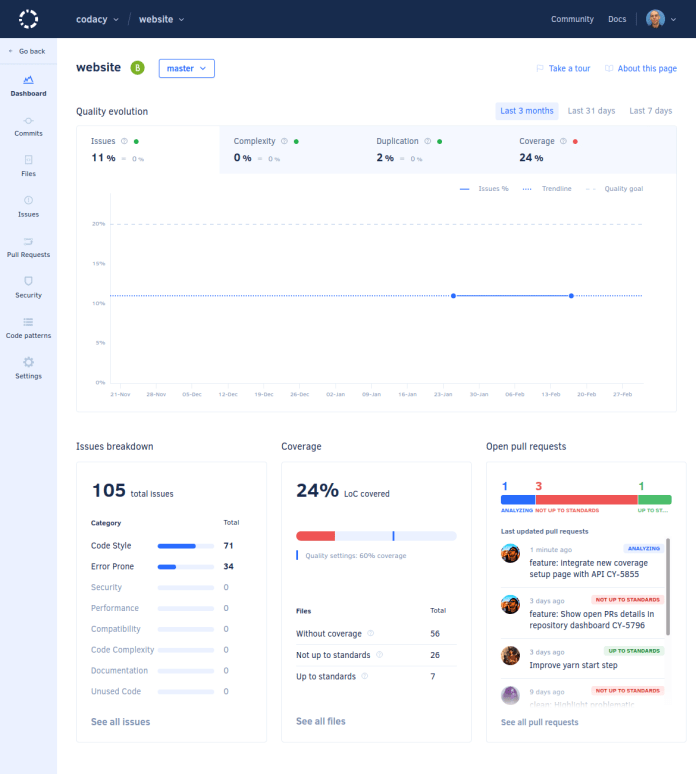
Technical debt happens in all software projects, regardless of the programming languages, frameworks, or methodologies. It is a common metaphor for software’s accumulated backlog (like bugs, missing documentation, and legacy code).
As you may have already read about technical debt explained, you’ll need to pay that debt off sooner or later. To help in that process, we shared ways your team can start tackling technical debt while delivering value at the end of each Sprint.
If not addressed, technical debt will compound and cause greater issues in your software. It will impact not only the customer experience but also your team and your business. Today, we’ll dive deeper into the true impact of technical debt.
What is the true impact of technical debt?
The impact of accumulated technical debt extends broadly across different parts of an organization’s ecosystem. It can have serious consequences, like losing customers, making a product more vulnerable to security risks, increasing development costs, and negatively impacting your team’s morale.

Technical debt impacts your code
- Increased number of bugs: Defects, issues, and bugs are typical consequences of technical debt. These bugs also impact the product, raising maintenance costs and affecting the customer experience.
- Increased complexity: When developers rush to meet a deadline, they may not develop clean and well-organized code. This will make the code more complex than it needs to be, making it more challenging to maintain and more prone to bugs and other issues.
- Decreased code quality: Poor design and development practices might allow developers to finish their work in time for tight deadlines. However, they also reduce code quality and create long-run issues. Low code quality will also make it difficult for developers to maintain the codebase, directly impacting the product.
Technical debt impacts your product
- Decreased usability and functionality: Some features might fail to work correctly due to technical debt, impacting usability, customer satisfaction, and reputation. It can also increase the downtime of your product.
- Increased development cycles: Technical debt can also lead to delays in the development process, as developers may need to spend more time fixing issues and addressing other aspects of the codebase. This can impact the ability to meet deadlines, slow down the build process, and delay the release of new features and updates to the market. In addition, the delays impact customers and teams relying on delivery, like marketing and sales.
- Increased security problems: Poorly written code is often poorly secured, which can introduce unexpected vulnerabilities and increase the risk of serious events, such as data security breaches.
Technical debt impacts your team
- Decreased development speed: Since developers need to spend time on technical debt, working on and delivering new features takes longer.
- Decreased team morale: As technical debt accumulates, it becomes more difficult to understand the codebase and the amount of work needed to add a new feature. As such, technical debt can also lower your team’s productivity considerably. Plus, the team’s morale decreases as the team spends more time fixing preventable problems.
- Decreased retention: Unhappy or demotivated developers are more likely to resign, impacting your team’s organization, workload, and overall performance.
Technical debt impacts your business
- Decreased customer satisfaction: Technical debt almost always negatively correlates with customer satisfaction due to poor user experience. This translates into an increased expense due to more tickets and customer support and loss of sales and renewals due to lower client retention.
- Decreased innovation: When technical debt is severe, developers must continue servicing the issues instead of devoting time to building innovative new features with business value. The team will not be able to adapt quickly to opportunities or changes in the market.
- Increased costs: Technical debt can increase the cost of maintaining and improving the codebase over time. This can include the cost of fixing issues and improving performance and the cost of lost productivity due to delays. There are also customer support costs related to clients not being satisfied with the product.
- Decreased revenue: Customer dissatisfaction due to technical debt means less client retention and inefficient marketing spending.
- Brand and reputation: Ultimately, if technical debt is severe, it can affect the brand and reputation and undermine the business’s survival.
Codacy Quality: the best solution for tackling technical debt
We run a DevOps Intelligence Platform that helps thousands of developers ship billions of lines of code per day by automating and standardizing code reviews. We’ve built a suite of products that help developers quantify and act on their software quality, engineering performance, and security.
Codacy Quality is the best-in-class solution for static code analysis. Integrating seamlessly into your workflows, Codacy Quality helps engineering teams save time in code reviews and tackle technical debt. Quality supports 40+ programming languages and is available in free open-source and enterprise versions.

.svg)


